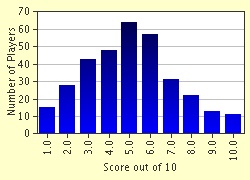Quiz Answer Key and Fun Facts
1. The first example of a "Pilgrimage" to Jerusalem may have been the journey made to the Holy Places by the mother of Constantine the Great. What was her name?
2. In the course of Constantine's reign his mother pressed him for the building of basilicas in some of the "holy spots" in Palestine. One was the Nativity Church in Betlehem, another the Holy Sepulchre at Jerusalem. Which of these was the third of those basilicas?
3. When in 638 the Holy Places at Jerusalem were taken by the Muslims, the reaction of the Christians at first was to look for 'substitutes' in their own territory. One such a centre of devotion was the supposed burial place of the Three Magi. Where was that?
4. Pilgrims to Jerusalem wore a special outfit of which a broad-rimmed hat and a staff were two of the requisites. On their return-trip, they symbolised the successful outcome of their enterprise, by wearing : ___________________
5. In the 8th century the continuous invasions by Muslim armies into Western Europe were finally stopped by the grandfather of Charlemagne in a battle near Tours, usually called the "Battle of Poitiers". Who was that "grandfather of Charlemagne"?
6. The Muslim invasions had not only robbed the Christians of access to Jerusalem, also the major part of Spain had fallen into the hands of what the Western world then called the Saracens. The Reconquista was to take some time. Some parts of Spain had however always remained "Christian territory". Which of these areas had never been conquered?
7. The Muslim withdrawal from Spain began already in 1212 when on the 16th of July Alfonso VIII defeated the Moorish troops in the Battle of _____________
8. What did Pope Urban II at the Council of Clermont in 1095 promise to the Knights that undertook to fight for the liberation of Palestine ?
9. When you "liberate" a country that has not asked for liberation, you have to leave behind an occupying force. In 1099 ,at the end of the First Crusade, a Kingdom of Jerusalem was created for this purpose. The man to whom the title of King was offered, piously rejected the proposition. Who was he?
10. Saracens were not the only victims of the Crusading zeal. 'Crusades' were also organised against 'local' heretics. Which of these were the first target of such a half military, half religious enterprise (and also of the first Papal Inquisition) ?
Source: Author
flem-ish
This quiz was reviewed by FunTrivia editor
bloomsby before going online.
Any errors found in FunTrivia content are routinely corrected through our feedback system.

